It’s interesting to know about the history of a place like Siracusa in a chronological sense but reading the personal accounts that are provided through books such as Jeremy Drummett’s Book Syracuse City of Legends – A Glory of Sicjily bring the place truly to life. Visiting Sirucusa means walking the streets and places that Plato, Archimedes and Cicreo also visited. Its a way to see these ruins not just as large stones but to imagine what it would have been like when these icons of times past were in the very same spot.
Our visit to the Parco Archelogico Della Neoplolis with our two adult daughters (who joined us for a few days) brought this home quite starkly in a most disturbing manner. As we looked at the excavations of the quarries (Latomie) my eldest daughter and I discussed how they were built and the numbers of slaves that would have been needed. Her comment that she would not have made much of a slave and the subsequent obvious realization that her role as slave would not have been in the quarries was a reality check – how lucky we are to be visiting some 2 plus thousand years later.
A walk through the quarries( Latomina del Paradiso) includes the Ear of Dionysis and a Grotto dedicated to the rope makers (seems so odd to honour rope makers in today’s world). The quarries provided the stone for the ancient city and extraction would have been back breaking work for the slaves, many of whom were vanquished soldiers from the seemingly endless battles over Siracusa. The perils of losing the war in these items didn’t bare thinking about!
These quarries became prisons for the defeated soldiers. There was no prospect of escape as Cicero himself had noted centuries before. We just as Cicero had done could only marvel at the task and be mindful of the terrible life that those who created it must have endured.
Near the quarries are both the Greek and Roman Theatres.
The Greek Theatre is imposing and provides views back to the city. It is still used today for live performances. Built by Gelon (presumably by his slaves in reality) in the 5th century BC. It went through rennovations by Heiron II in the third century BC and then again in the initial Roman period. It seated 13,000 people!
Standing at the top of the theatre or sitting on the stone seats it’s easy to imagine what it would have been like to as a performance.
While the Roman theatre is not in a great state of repair today, it is still commanding. Built in the 3rd century AD it seated 14,000 people. It’s possible to see the corridors where the wild beasts walked before their battles with the gladiators. It is also possible to walk the ground where these battles took place.
Even today some of the seats of the special guests whose names are engraved on their seats are still visible.
This is not just a place to visit but one to marvel at. The site is now in ruins but walking through the Ear of Dionysius it is possible to get a sense of what it would have been like to be a prisoner and appreciate the backbreaking work of the slaves. Then on the hill overlooking the city of Siracusa it’s possible sit as the Greeks did watching plays at the Greek Theatre or to walk on the same ground that the gladiators fought wild beasts or each other in the Roman Theatre.
For me this was a place which truly came to life during my visit.
Travel Tip – tickets which are quite expensive €10 are apparently free on your birthday. Tickets are purchased from a small building behind the souvenir stalls. It’s not well signed and quite a distance from the street on the opposite side to the Parco della Archologica.
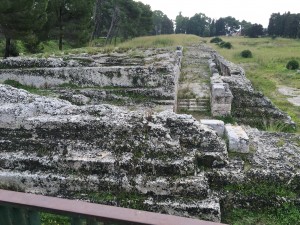
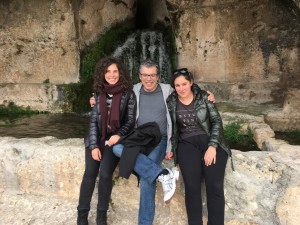
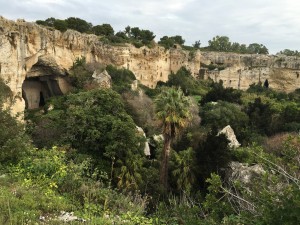
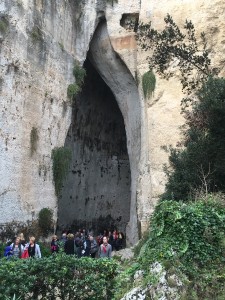
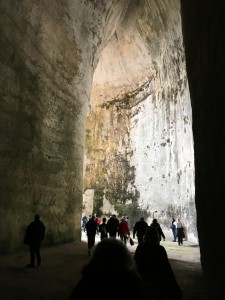
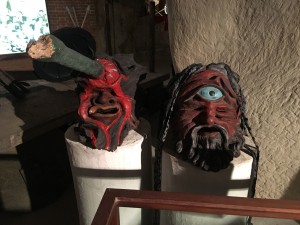
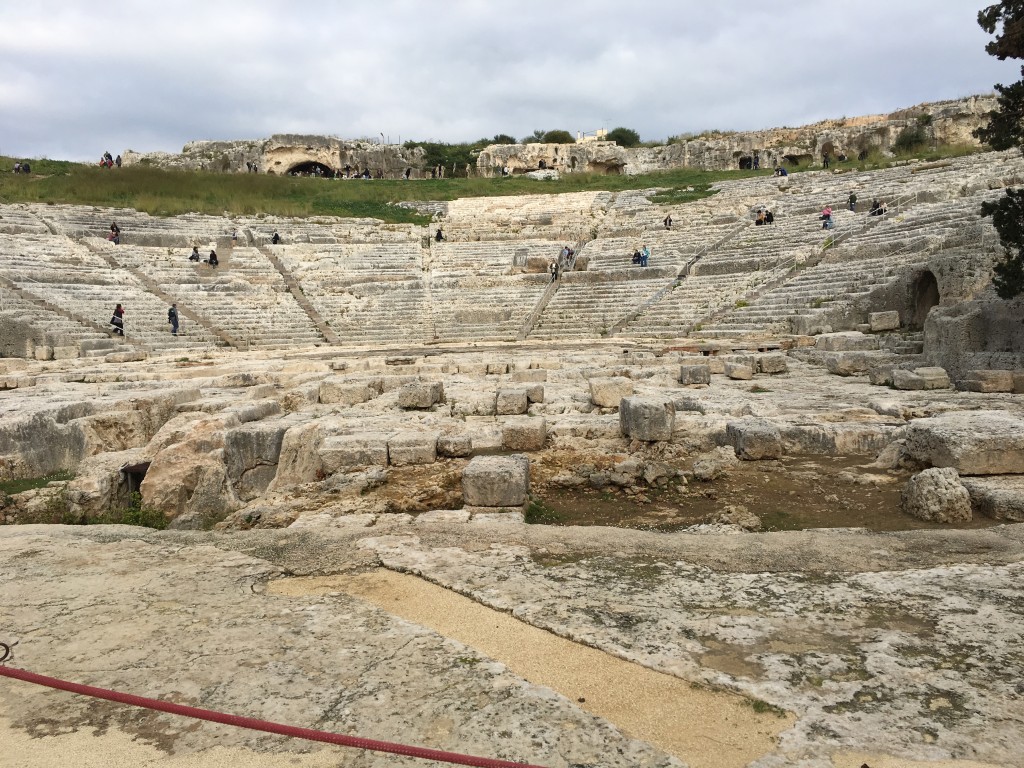
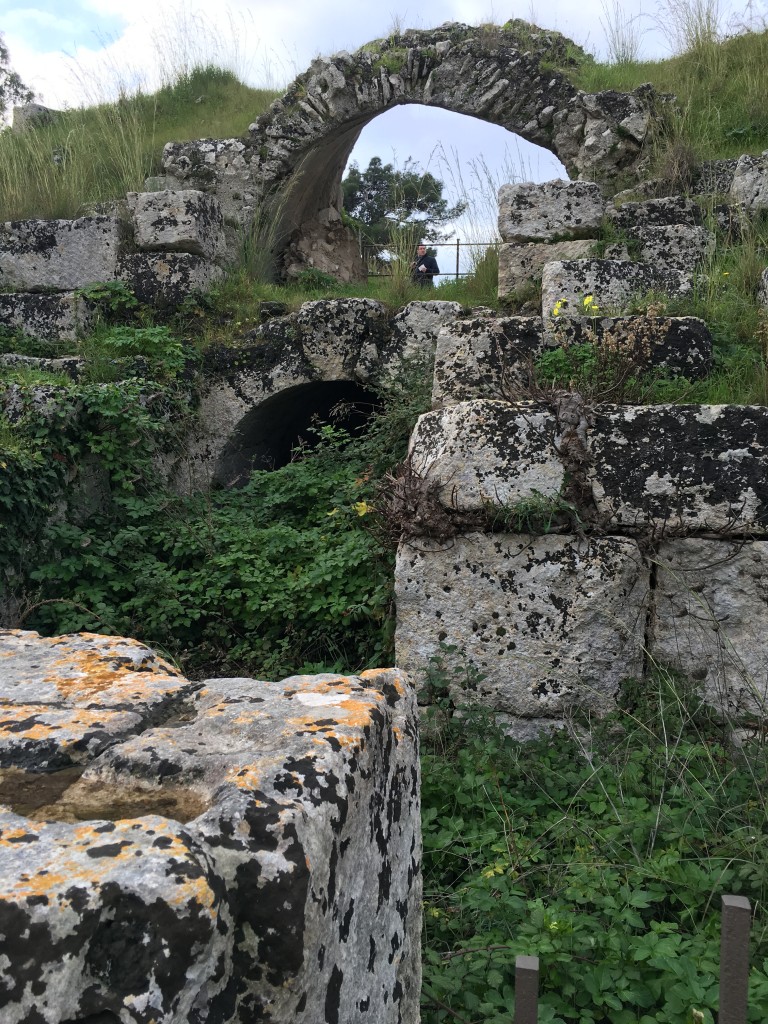
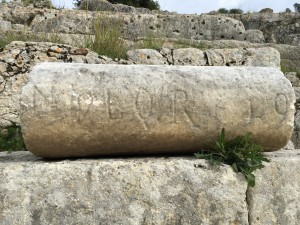
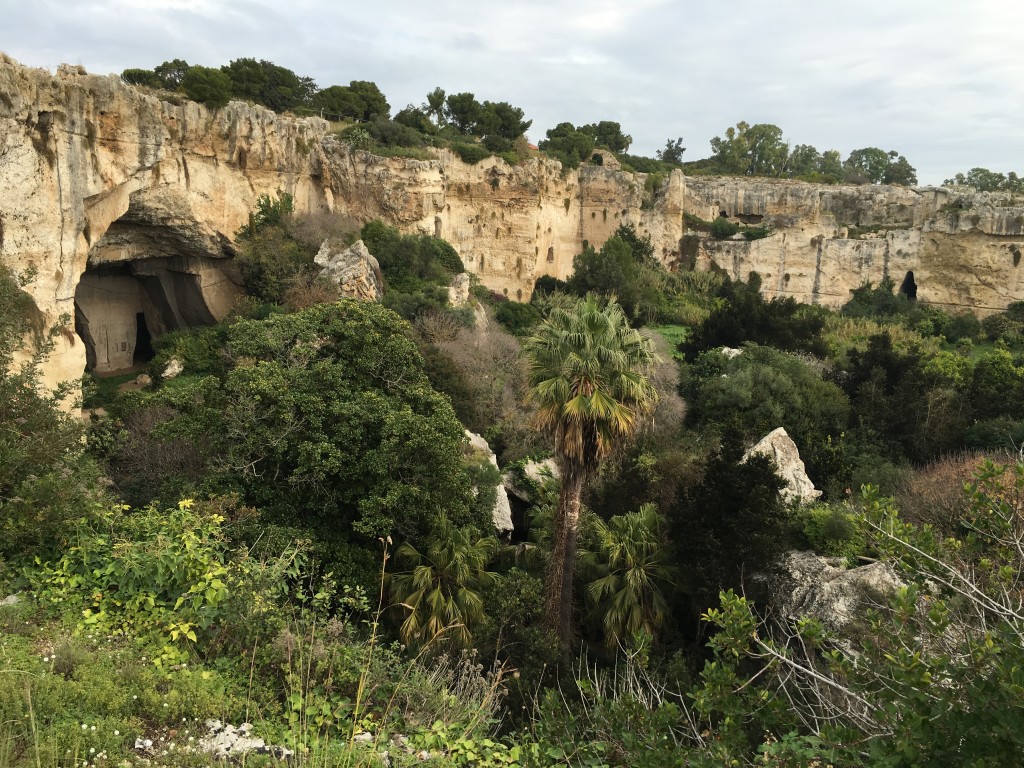
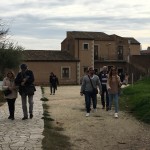
Ooof–I should have gone on my birthday!
Indeed, so should I!